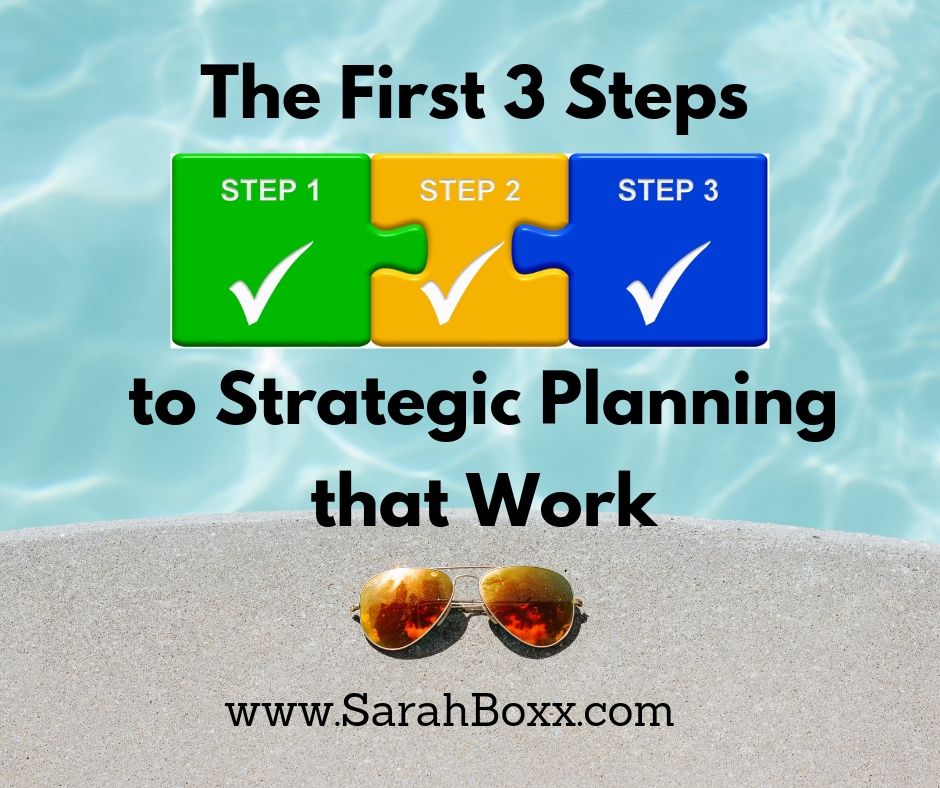Individual or group, public or private, for profit or nonprofit, the difference between dreamers and achievers is planning followed by consistent action.
Successful individuals, companies and organizations establish goals and a clear purpose and direction for the short and long-term. Their goals provide a framework for decision making within the organization and serve as the unifying voice for everyone involved.
In my post Why Planning Isn’t Just For The Big Guys, strategic planning is defined as the combination of vision casting and practical details needed to make your goals a reality. In other words, it means breaking down in detail what you want to accomplish, the reasons why, and how you will proceed. The main focus was on strategic planning at the individual level.
In this post we take a look at planning for an organization or even a group of organizations collaborating to achieve a shared vision. This strategic planning process involves other people and requires a “plan to plan” that values their contributions. And that begins long before you’ve called your first meeting or even drafted an agenda.
It starts by getting clear, by taking a step back and getting ready to plan. This needs to happen as soon as you hear the words, “We need a strategic plan and we think you (executive director, consultant, coach, department head) should take the lead.”
Take these steps and you set the stage for developing a plan that will matter in the long run and make a difference in the short-term.
- Decide why you are planning.
- Determine who to involve.
- Understand constraints.
Why and Why Now. Sometimes I’m asked to help a group or organization plan because they need to “check a box” and demonstrate they have a plan. Sometimes they have a plan that has been sitting on a shelf and a new leader decides it’s time to dust it off and reinvigorate it. Other times organizations and groups are proactive and recognize the value of a plan to ultimately achieving results. (quote) Knowing whether your plan is a “have to do” or a “want to do”, considered a burden or a benefit, will shape the planning process.
Take the time to ask and clarify what leaders expect as a result of the planning process and how they see the plan benefitting the organization. If you are the leader, get clear before you ask others to get involved in the process.
Determine Who to Involve. When creating a strategic plan for a company or organizations (one that will affect and be implemented by many people) involve a cross section of people in the process. This can mean having staff, vendors, customers and clients provide information through surveys, conversations, or meeting participation.
Involving others must be thoughtful and strategic. What is their role? Advisor, subject matter expert, end user, client? How will you use the information and insights you glean from them? How can they contribute in the easiest way for them? No matter how many different people are involved, you need to have decision makers in the room. Gain their commitment to participate and champion the process before you attempt to begin.
Yes, it takes more time and thought to include a variety of people in the process. However, it’s well worth the extra effort.
Understand Constraints. There are always constraints in planning. You are dealing with people and their calendars and competing priorities. Add in a board of directors, external partners, multiple divisions or locations, and the coordination and processes become more complex. If you have a short timeline, limited resources (or are inexperienced in planning), it will take time to get organized, create the tools and processes for planning, and then calendar and conduct planning sessions.
Take the time to work through these three questions and you will have a process that works. The process works with small and large organizations alike, AND with collaborative planning processes where multiple parties join to develop a shared vision and specific goals, achieved by using the unique strengths, assets, and experience of each member. It’s a powerful approach that gives everyone involved a greater sense of ownership over the process and a personal investment in achieving results.
In our next post, we will talk more about involving people in collaborative planning work and how a small group of organizations working independently had joined together to become a driving force for changing the narrative of the nonprofit capacity in their region.
If you find yourself at the front end of a planning process (or even picking up where someone left off), take the time to clarify why you are planning, who needs to be involved for a successful outcome, and what constraints you need to think through before you begin.
If you get stuck or need help thinking through these three steps, schedule a 15-minute exploratory call with me in September and I will help you get started. CLICK HERE to schedule your 15 minutes!







